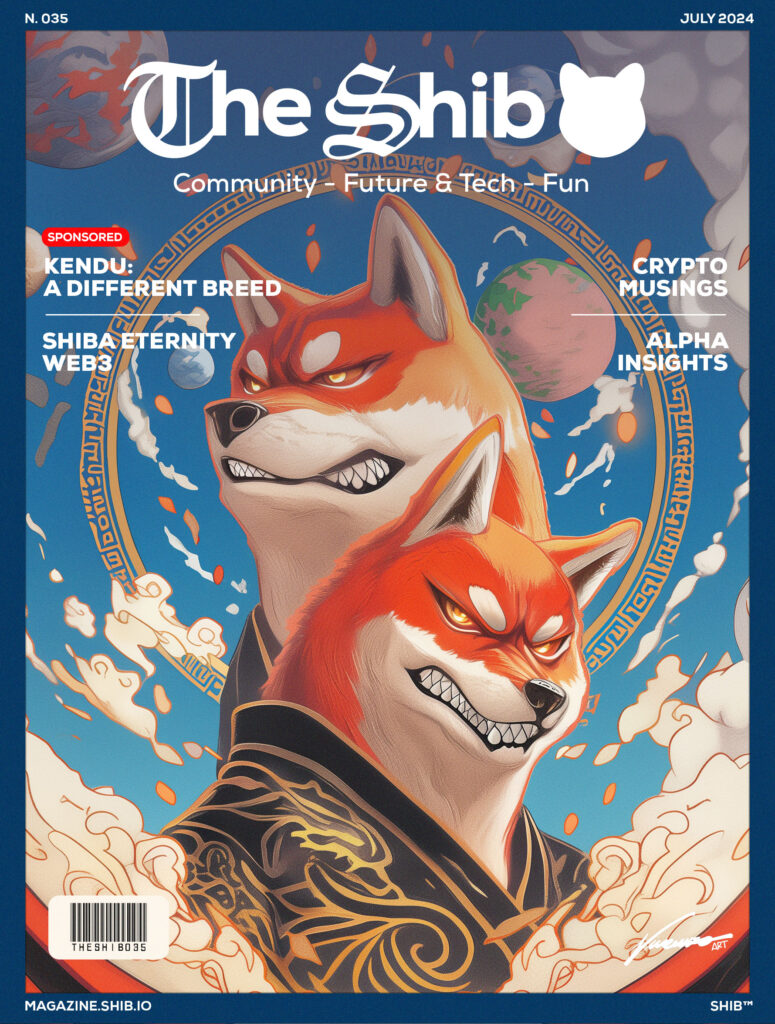Real-World Assets (RWAs) are reshaping the investment landscape, challenging traditional financial models. By bridging the gap between physical and digital assets, RWAs are unlocking new opportunities for investors worldwide. In this exclusive Q&A, we delve into the intricacies of RWAs with Yongjin Kim, CEO of Flipster, a leading cryptocurrency derivatives trading platform.
The Shib: How do you see Real-World Assets fundamentally changing the dynamics between traditional finance and the digital asset space?
Flipster CEO: “We expect to see a reduction in friction and increase in synergy between the traditional finance and digital asset space, with lower information barriers and enhanced liquidity across asset classes. There has been growing interest from traditional finance institutions to capitalize on RWAs, due to the benefits provided by blockchain technology such as cost-effectiveness, speed, and enhanced liquidity, and the RWA market is estimated to exceed $10 trillion by 2030.
“I believe the near-term potential will be more in fixed-income instruments. As the DeFi space matures and the yield comes down as a consequence, those looking for alternative yield sources will turn to tokenized fixed-income assets in my view. The trend has already started with private credit and is now spreading to U.S. treasuries and other debt instruments. These markets are valued at more than $50 trillion in aggregate. Other than fixed-income, private instruments are also good candidates (e.g.: private equity, credit, venture capital, etc.), which are worth around $6 trillion.
“The art and collectibles market, boasting global annual sales exceeding $65 billion—with $30 billion from the U.S. alone (Art Market Report 2024 by Arts Economics). Traditional avenues for buying and selling art and collectibles suffer from a lack of liquidity and are often hampered by high fees by auction houses.
“With art and collectibles tokenization, privileged access to these exclusive markets can be democratized, enhancing liquidity, and providing new sources of income for collectors and artists. On top of this, tokenization enables fractional ownership of a valuable art piece or exclusive collectible, such as through NFTs. All of these will shift our perception and interaction with art, offer greater transparency and security to the market, and create secondary markets for these assets to be traded.
“Tokenization supports fractional interests in the real estate market, making it possible for a wider audience to earn rental income and benefit from property value appreciation. The process eliminates many of the traditional barriers to entry, such as high initial investment costs, and brings added liquidity to illiquid asset classes.”

The Shib: Institutional vs. Retail Adoption: We’ve seen growing interest in RWAs from both institutional and retail investors. What unique advantages do RWAs offer each group, and what are the key factors driving their adoption in both sectors?
Flipster CEO: “The biggest benefit for institutional investors would be liquidity. Tokenized assets are traded on blockchain, which enables peer-to-peer value exchange. This would be a significantly more efficient way to transact compared to the traditional way which must go through multiple layers of intermediaries amounting to huge inefficiencies. Removal of middlemen means barriers to entry are reduced and the transaction can take place 24/7. This, along with the benefit of fractional ownership, creates an environment conducive to improved liquidity.”
Institutional adoption
“Recent regulatory advancements and the standardization of digital assets have facilitated institutional participation in RWAs. Clear regulatory frameworks mitigate compliance risks and operational complexities, providing a more secure investment environment.
“Advancements in blockchain and tokenization technologies have enabled the digitization of RWAs, enhancing their accessibility and tradability. Tokenization allows for the fractional ownership of large assets, increasing liquidity and enabling more efficient management and transfer of ownership.
“Improved due diligence processes and enhanced data transparency support better risk assessment and management for institutions. Access to detailed analytics and historical data helps align RWA investments with institutional risk profiles and return expectations.”
Retail
“Tokenization democratizes access to high-value assets, allowing retail investors to participate in investment opportunities previously reserved for institutions. Fractional ownership makes it feasible for individual investors to diversify their portfolios by acquiring small portions of assets like commercial real estate.
“Retail investors can achieve portfolio diversification by adding RWAs, reducing dependence on traditional financial markets and potentially enhancing risk-adjusted returns by incorporating asset classes with low or no correlation with products like equities or bonds.
“For retail investors in search of yield products, tokenized rental properties or infrastructure investments can be an attractive long-term investment opportunity.
“For retail investors that value self-custody, tokenized real estate or collectibles offer tangible assets that investors can directly own and manage, providing a sense of security and engagement that is appealing to many.”
Retail Adoption
“Growing financial literacy and the availability of educational resources have empowered retail investors to explore RWAs. Online platforms and advisory services provide the necessary information and tools for informed investment decisions, facilitating greater participation in the RWA market.
“The development of user-friendly investment platforms enable retail investors to access, manage, and trade fractional ownership of RWAs efficiently, making the investment process more accessible and straightforward.”
The Shib: Could you delve deeper into the technical process of tokenizing RWAs? What specific mechanisms are used to ensure the secure representation and transfer of ownership of these underlying assets on the blockchain?
Flipster CEO: “For secure transfer of ownership, iron-clad smart contracts verified through rigorous auditing can play an important role. Employing licensed custodians with ample experience in handling digital assets is also an effective solution.
“Tokenizing a real-world asset involves a systematic approach that converts ownership rights of a physical asset into a digital token on the blockchain.
- Asset evaluation and selection: The first step is to identify and value the RWA to be tokenized. This can range from a piece of art valued for its cultural significance to a commercial property known for its rental income to TradFi assets.
- Legal structuring: The next step involves creating a legal entity to hold the asset and issuing tokens as securities or utility tokens, depending on the jurisdiction.
- Creating digital tokens: The asset’s value is then represented as digital tokens on a blockchain platform. Each token symbolizes a fraction of the asset’s ownership, rights, or revenue streams.
- Distribution and trading: These tokens are then offered to investors, either through private sales or public offerings, depending on the regulatory framework. Once issued, tokens can be traded on secondary markets.
- Ongoing management: Managing these tokenized assets requires ongoing attention to regulatory compliance, asset performance monitoring, and investor communications, often facilitated by blockchain’s inherent transparency and security features.
“Blockchain-based governance mechanisms encoded into smart contracts can be used to manage RWA assets, such as the issuance of tokens, enforcing the ownership rights of investors, and establishing a cross-chain interoperability protocol for seamless ownership transfer process across different ecosystems. On-chain verification of Proof of Reserves, third-party audits, and compliance with legal frameworks can support greater transparency and trust among investors. Off-chain verification tools are also essential to ensure that the tokenized digital asset is backed by its underlying real-world asset.”
The Shib: While tokenization offers numerous benefits to investors, what are the most pressing risks and challenges they should be aware of? How can potential issues like regulatory uncertainty or security vulnerabilities be mitigated to protect investors?
Flipster CEO: “Regulatory uncertainty is a major concern, with differing regulations across jurisdictions creating compliance challenges and potentially impacting the functionality of tokenized assets. Security risks in blockchain technology, including potential hacking and vulnerabilities in smart contracts, present considerable threats to investor assets. Market volatility and liquidity risks are also critical, especially in emerging markets with low trading volumes. Technological risks, such as system failures and issues with blockchain interoperability, further complicate investments.
“Mitigating these risks involves staying updated on regulatory developments and ensuring compliance with applicable laws. Implementing robust security protocols, including multi-signature wallets and regular security audits, can protect against vulnerabilities. Diversifying investments across various asset classes and conducting comprehensive technological due diligence are crucial for managing risks. Furthermore, enhancing investor education about the complexities and risks of tokenized assets can empower investors to make informed decisions and navigate the evolving landscape more effectively.”
The Shib: We’ve seen successful RWA projects emerge, particularly in real estate and art. Can you share specific examples of how these projects have democratized access to traditionally exclusive investments? What lessons can we learn from their successes and challenges?
Flipster CEO: “Actually, if you were to use a more broad definition for RWAs, the most successful project is by far stablecoins, with the total market cap at $166 billion. Excluding stablecoins, the most successful project would be private credit ($8.5 billion), U.S. Treasuries ($1.9 billion), commodities ($880 million), and corporate bonds in that order (see below).
“Some tokenization of art works, such as Pablo Picasso’s ‘Fillette au beret’ or Damien Hirst’s ‘Everyday Objects’ Collection have received media coverage, but the overall market size for art tokenization or real estate tokenization remains very small compared to other assets mentioned above.
“An important lesson from the proliferation of fixed-income instruments (and stablecoins) in RWA is that the demand for tokenized assets is strongest when the demand for the asset in question is global in nature, without being confined to any specific jurisdiction. This is because frictionless value exchange, the blockchain’s key value proposition, has product-market fit when the asset involved frequently requires cross-border transactions. An asset that trades only locally doesn’t see much incremental benefit from being on the blockchain in jurisdictions where the local financial system functions reasonably well.
“USD stablecoins are a good example. USD is a reserve currency that everyone on the planet wants for its cross-border versatility. Likewise, tokenized fixed-income instruments are mostly USD-denominated, meaning they are an alternative for USD stablecoin holders who want to give up temporary liquidity for yield. Except for a small number of high-profile artworks and real estate, the demand for both assets is usually local and therefore only trades within a small confines of local enthusiasts. Tokenizing these assets can bring some benefits such as fractional ownership, but given the limitations on the network effect a local asset can generate, the incremental benefits of tokenization are much smaller compared to globally sought-after assets such as USD or USD-denominated yield products.”
The Shib: What regulatory frameworks do you believe are essential to ensure the sustainable growth and integrity of the RWA market?
Flipster CEO: “In developed countries, relevant regulations need to be updated to bring tokenized assets under the existing framework. Additionally, developing countries should consider relaxing capital controls, as tokenized assets cannot fully realize the benefits of frictionless ownership transfer if transactions are confined within their borders.”
About The Expert
Yongjin Kim is the founder and CEO of Flipster, one of the fastest-growing cryptocurrency derivatives trading platforms. Backed by Presto Labs, Flipster was founded in 2021 and offers over 250 perpetual futures listings, with a 565% growth in active traders and platform users spanning across 177 countries.
Prior to building Flipster from the ground up, Yongjin was a quantitative researcher and developer at Jump Trading. In 2014, he co-founded Presto Labs, which has since become the largest crypto quantitative trading firm in Asia, with a daily trading volume of approximately $3 billion. Yongjin double-majored in computer science and mathematics at the Massachusetts Institute of Technology (MIT).
Under Yongjin’s leadership and vision, Flipster continues to uncover untapped potential and exclusive opportunities, driving the development of an innovative and high-performance trading platform.
Read More
- Exclusive Interview/ D3 CEO: ‘*SHIB Name Tokens the Future of Crypto Security & Identity’
- Exclusive Interview/ Dr Rand Hindi on Zama’s Vision for Shiba Inu Privacy Through FHE
- Exclusive Interview: Exploring the Future of DeFi with K9 Finance Experts
Yona has no crypto positions and does not hold any crypto assets. This article is provided for informational purposes only and should not be construed as financial advice. The Shib Daily is an official media and publication of the Shiba Inu cryptocurrency project. Readers are encouraged to conduct their own research and consult with a qualified financial adviser before making any investment decisions.










